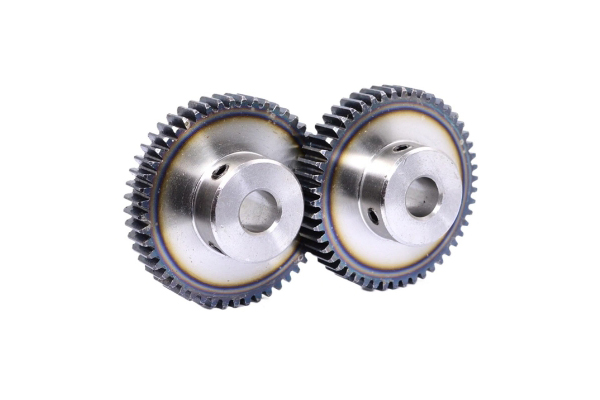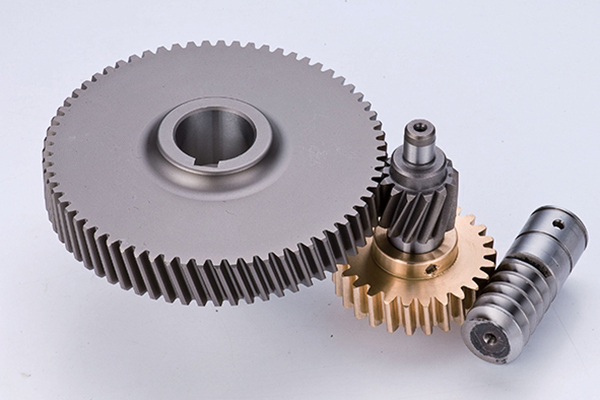
How a Pinion Gear and Tooth Count Affect Your RC‘s Top Speed and Acceleration
2025-02-25
Ever wondered how that tiny pinion gear in your rc car can have such a big impact? This article dives into the fascinating world of gear ratio, explaining how the number of teeth on your pinion gear and ring gear directly affects your vehicle’s performance. You’ll learn how to adjust your gear ratio to achieve your desired top speed or acceleration, and why understanding this concept is crucial for rc enthusiasts of all levels. It’s a deep dive, but worth it!
1. What is Gear Ratio, and Why Does it Matter for RC Cars?
Gear ratio is a fundamental concept in mechanical engineering, and it’s especially critical for understanding how your rc car performs. In essence, it describes the relationship between the rotational speeds of two connected gears. A gear system, like those found in the gearbox of your rc, uses teeth meshing together to transfer rotational force. The ratio is determined by the number of teeth on each gear. This is where it gets interesting; the ratio directly impacts the balance between top speed and acceleration.
Think of the gear as a translator. It converts the high rpm of the motor into the torque needed to turn the wheel. A lower gear ratio (fewer rotations of the pinion gear for each rotation of the spur gear) gives you more torque, which is great for acceleration, especially off the line, but the top speed may decrease. A higher gear ratio (more rotations of the pinion gear for each rotation of the spur gear) offers a higher top speed but could result in slower acceleration, which is where many rc enthusiasts are most focused.

This is an example of high-quality slewing bearings that support smooth rotation, a principle related to how gears efficiently transfer power.
2. How Does the Pinion Gear Affect Gear Ratio?
The pinion gear is the small gear that directly connects to your motor. The size of the pinion plays a crucial role in determining your gear ratio. If the pinion has a tooth count of, let’s say, 10 teeth, and the spur gear has 50 teeth, the gear ratio is 5:1 (50 divided by 10). It means that the pinion motor must rotate five times for the spur gear to rotate once.
A smaller pinion will result in a lower gear ratio which is going to yield more torque, and better acceleration but a lower top speed. Conversely, a bigger pinion results in a higher gear ratio allowing for a higher top speed. The pinion gear is a critical component. Selecting the right pinion gear is one of the most significant decisions you’ll make when setting up your rc vehicle. This is where a good setup starts.
3. What is the Significance of the Tooth Count on the Pinion and Spur Gears?
The tooth count on both the pinion gear and the spur gear is what dictates the gear ratio. The spur gear is typically a larger gear that is connected to the pinion gear to transfer power to the rest of the vehicle, such as the differential. The number of teeth on these two gears is used to calculate the gear ratio. You will see that many enthusiasts would like to know how to change this aspect.
The difference in the tooth count is critical. A big difference—like a 20 teeth pinion vs. a 60 teeth spur gear—will give you a lower gear ratio, more torque, and improved acceleration. A small difference—like a 20 teeth pinion vs. a 25 teeth spur gear—will result in a higher gear ratio, leading to greater top speed, however, the acceleration would be significantly lower.
4. Calculating the Gear Ratio: The Math Behind the Motor
Calculating the gear ratio is simple math. It involves a straightforward formula. To find the gear ratio, you divide the number of teeth on the spur gear by the number of teeth on the pinion gear. For instance, if the spur gear has 60 teeth, and the pinion gear has 15 teeth, the calculation is 60 / 15 = 4. This yields a gear ratio of 4:1.
The final drive ratio (or "final gear ratio") is another crucial concept. This is the gear ratio that considers all gear reductions in your vehicle, including the gearbox and the differential. To find the final drive ratio, you multiply the gear ratio of the pinion and spur gears by the gear ratio of the differential. Understanding the gear ratio is so important.
5. How Does Gear Ratio Influence Top Speed and Acceleration?
The gear ratio has a direct impact on the top speed and acceleration of your rc vehicle. Let’s break down how the gear ratio affects these two performance aspects:
- Acceleration: A lower gear ratio (where the spur gear has significantly more teeth than the pinion) generally provides better acceleration. This is because the motor‘s torque is amplified, allowing the vehicle to reach its top speed more quickly. In other words, the vehicle is going to spin up faster.
- Top Speed: A higher gear ratio (where the pinion has a similar or slightly lower tooth count compared to the spur gear) will translate to a higher top speed. This is because the motor‘s rpm are translated more directly to the wheel, allowing the vehicle to move faster when at max rpm. However, acceleration may suffer.
Remember, it’s a trade-off. You can’t have both the fastest top speed and the quickest acceleration at the same time, without a sophisticated gearbox.

This is an example of precision bearings, and its quality is related to the accuracy of gear meshing, and its ability to handle high speeds and loads.
6. Choosing the Right Gear Ratio: Balancing Torque and Top Speed
Choosing the right gear ratio is all about balancing your need for torque with your desire for top speed. Consider the terrain, the motor, and your driving style. Are you running a brushed motor or a brushless motor? A brushed motor will have its own limitations.
- For Off-Road: If you’re running an off-road rc car, torque is usually more important than top speed. You’ll need enough torque to navigate obstacles, climb hills, and get through rough terrain. In this case, a lower gear ratio with more torque is preferable.
- For On-Road: If you’re running your rc car on a paved surface, top speed might be more important. Here, a higher gear ratio, giving you a good top end, might be the best choice.
There’s no one-size-fits-all answer. The optimal gear ratio is going to change. A lot of this comes down to experimentation and finding the tooth combination that best suits the vehicle and your driving style. It is a very important setup.
7. What Factors Influence the Choice of Pinion Gear and Spur Gear?
Choosing the pinion gear and spur gear requires careful consideration of several factors:
- Motor Type: The motor‘s rpm and torque characteristics will influence the best gear ratio. A brushless motor will typically handle higher gear ratios better than a brushed motor.
- Terrain: As discussed earlier, the terrain you’ll be driving on is a key factor. Off-road vehicles need more torque, while on-road vehicles often prioritize top speed.
- Battery: The voltage of the battery can affect the gear ratio. A higher voltage battery might allow you to use a slightly higher gear ratio and achieve a higher top speed. A lipo battery is a popular choice.
- Vehicle Weight: The heavier your vehicle, the more torque you’ll need to accelerate.
- Tire Size: Larger tires will change your final drive ratio, so you may need to adjust your gear ratio accordingly.
- Esc: The esc and motor combo determine the rpm and torque limits, which impact the gear ratio you can use.
8. What are the Practical Tips for Adjusting Gear Ratio in Your RC?
Here are some useful tips for adjusting your gear ratio:
- Start with a Good Starting Point: Consult your rc car’s manual or online forums for the good starting point. The manufacturer may provide recommendations for different driving conditions.
- Experiment: Don’t be afraid to experiment with different pinions and spurs. Keep a record of the tooth combination you try and the performance you experience.
- Adjust in Small Increments: Change the pinion gear or spur gear by just a few teeth at a time to notice the changes.
- Monitor Motor Temp: If your motor starts to run hotter than usual after a gear ratio change, the gear ratio might be too high. Excessive heat can void the warranty**, so it’s essential to pay attention to this aspect.
- Check the Backlash: Ensure there’s the right amount of backlash (the space between the teeth when the gears are meshed). If the gears are too tight, it can create friction and damage them, and if they’re too loose, it can cause the gears to strip. This adjustment is so important.
- Consider a Slipper Clutch: A slipper clutch helps to protect the gears and the drivetrain from torque spikes.
- Use a Gear Mesh Tool: To precisely measure and set gear mesh.
9. What are the Common Mistakes to Avoid When Adjusting Gear Ratio?
- Ignoring Motor Temperature: Over-gearing (using a gear ratio that’s too high for your motor) is one of the most common mistakes. This can cause the motor to run hotter, which can lead to damage.
- Not Checking Backlash: Improper backlash can cause premature wear and tear on your gears. Make sure to properly adjust the gear mesh after changing the pinion or spur.
- Using the Wrong Pinion Gear: Make sure you’re using a pinion gear that’s compatible with your motor‘s shaft size and pitch**.
- Making Big Jumps: Changing the gear ratio drastically can significantly affect the vehicle‘s performance. Instead, make small changes to find the optimal setup.
- Forgetting About the Differential: The differential also plays a role in the final gear ratio, so remember to account for it.
- Not Testing: After making a pinion gear adjustment it is so important that you test the changes.
- Ignoring ESC Limits: Ensure that your chosen gear ratio is suitable for your ESC‘s current handling capacity.
- Not Securing the Pinion: Always double-check that the pinion gear is securely fastened to the motor shaft. A loose pinion can strip the teeth and damage the gear**.
A high quality slewing ring is precision-engineered to provide smooth and reliable operation, similar to how well-chosen gears create a smooth drive train.
10. Top Pinion Gear and Spur Gear Combos for Different RC Applications
Here are a few examples of pinion gear and spur gear combinations, considering the tooth number, with suggestions for different rc applications. Remember, these are just starting points, and you should always adjust based on your specific rc vehicle, motor, and driving style.
- For Traxxas 2WD RCs (e.g., Bandit, Rustler, Stampede):
- Off-Road Performance: Pinion: 25 teeth, Spur: 86 teeth. This setup is a good good starting point for off-road driving, providing good torque and acceleration.
- Balancing Top Speed and Acceleration: Pinion: 28 teeth, Spur: 86 teeth. This is a popular tooth combination for on-road and light off-road use, balancing speed and power well.
- For Racing (On-Road):
- High Top End: Pinion: 32 teeth, Spur: 78 teeth. This setup is going to increase top speed and is suitable for high-speed racing on a track or other smooth surfaces.
- For Crawling:
- Maximum Torque: Pinion: 14 teeth, Spur: 86 teeth. The lower gears provide a lot of torque for navigating difficult terrain.
Summary:
- Gear ratio determines the balance between torque and top speed in your rc car.
- The pinion gear‘s tooth count is a key factor in determining the gear ratio.
- A lower gear ratio (smaller pinion with larger spur) increases acceleration, while a higher gear ratio (larger pinion with smaller spur) increases top speed.
- Consider the motor, terrain, and your driving style when choosing the right gear ratio.
- Always experiment and monitor motor temperature and backlash when adjusting the gear ratio.
Allen from China here, I hope this article has helped. Remember to check out our selection of high-quality slewing bearings and customizable slewing ring bearings to make sure your project is running smoothly, and don’t forget about our slewing ring bearing references!





